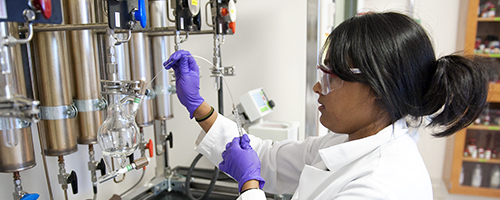Document Type
Article
Publication Date
12-1-1986
Publication Title
Journal of Biological Chemistry
Abstract
When cytochrome c oxidase is isolated from mitochondria, the purified enzyme requires both cytochrome c and O2 to achieve its maximum rate of internal electron transfer from cytochrome a to cytochrome a3. When reductants other than cytochrome c are used, the rate of internal electron transfer is very slow. In this paper we offer an explanation for the slow reduction of cytochrome a3 when reductants other than cytochrome c are used and for the apparent allosteric effects of cytochrome c and O2. Our model is based on the conventional understanding of cytochrome oxidase mechanism (i.e. electron transfer from cytochrome a/Cu(A) to cytochrome a3/Cu(B)), but assumes a relatively rapid two-electron transfer between cytochrome a/Cu(A) and cytochrome a3/Cu(B) and a thermodynamic equilibrium in the 'resting' enzyme (the enzyme as isolated) which favors reduced cytochrome a and oxidized cytochrome a3. Using the kinetic constants that are known for this reaction, we find that the activating effects of O2 and cytochrome c on the rate of electron transfer from cytochrome a to cytochrome a3 conform to the predictions of the model and so provide no evidence of any allosteric effects or control of cytochrome c oxidase by O2 or cytochrome c.
Volume
261
Issue
31
First Page
14461
Last Page
14466
ISSN
00219258
Creative Commons License

This work is licensed under a Creative Commons Attribution 4.0 International License.
Version
Version of Record
Recommended Citation
Bickar, D.; Turrens, J. F.; and Lehninger, A. L., "The Mechanism by which Oxygen and Cytochrome c Increase the Rate of Electron Transfer from Cytochrome a to Cytochrome a3 of Cytochrome c Oxidase" (1986). Chemistry: Faculty Publications, Smith College, Northampton, MA.
https://scholarworks.smith.edu/chm_facpubs/85


